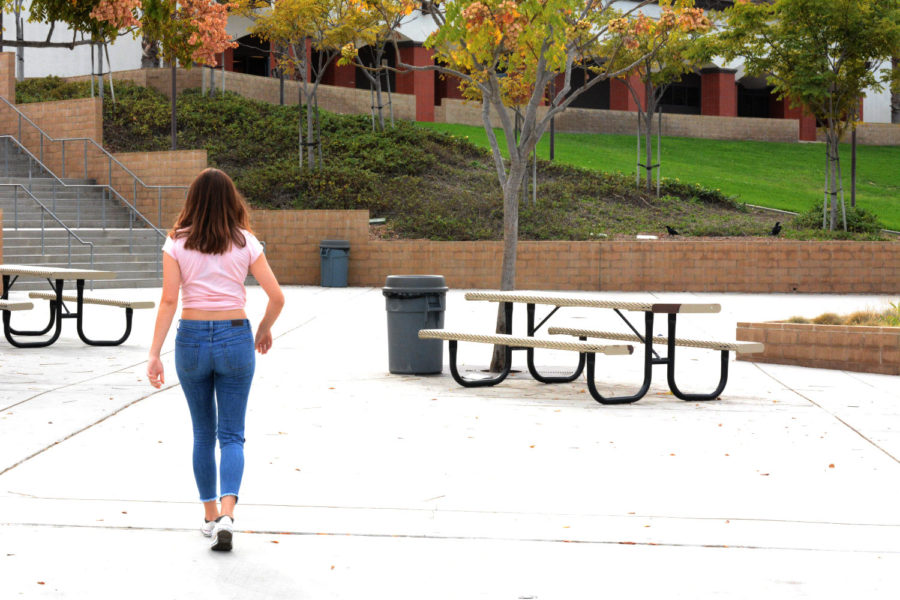Dress Code Reform
At SJHHS, female students are the main victims of dress code. Here, a female student walks through the lower quad with her mid-drift exposed, which goes against dress code policy at San Juan.
November 15, 2017
As many of us continue to challenge the role dress code has in public education, many opposers continue to seek excuses for its existence. Some argue it promotes professionalism and safety, but wearing a dress that is deemed too short could get someone sent to the office while wearing sweatpants and a hoodie will not. So much for professionalism!
The dress code makes girls feel ashamed of themselves for their style and gives the rest of the school the idea that it’s okay to degrade them as well. Rather than teaching girls to cover up, schools should be focusing on teaching others not to objectify them. The dress code rule is counterproductive and blatantly encourages rape culture by implying that girls are responsible for boys’ actions.
Girls and boys alike are affected by the implicit message that dress code implies that the amount of skin a woman has covered translates directly into the amount of respect she deserves under this code; and, if any man disrespects a woman who is not dressed conservatively, then she should take the blame Or worse, if a woman is not dressed conservatively and a man assaults or harrasses her, the woman is the issue.
Dress code has gotten so far out of hand: it encourages the blatant sexualization even in young kids Girls of all ages, elementary through high school are affected by the dress code, and it is wrong that they have to deal with concepts such as skirt length and how much shoulder is appropriate to show at such an early age.
An anonymous ninth-grader at SJHHS who was once dress coded in middle school said, “It was weird, and it was in sixth grade. It was for wearing a dress that was past my fingertips, but you could still see my knees. Especially then, I didn’t know my knees turned anyone on.”
This is clearly instigating male privilege, showing from the very beginning that women have to walk on eggshells while men can do as they please. This double standard of a dress code discourages equality and sexualizes women’s bodies.
Many teenagers already have enough self-esteem issues without school administrators trying to belittle their self expression by controlling their wardrobe. The fact of the matter is that what girls wear is no one’s business but their own. If they feel confident wearing an outfit, no one should have the right to force them to change.
Another problem the dress code poses is the fact that girls have different body types, which causes clothes to look different on certain girls.
Amanda Tacconelli, a freshman at SJHHS got called out for breaking the dress code with her shorts, and said, “I felt kind of mad because people with long arms have to wear longer shorts.”
Another freshman, Savanna Goodpaster said, “It was frustrating because some other girls would be wearing the same shorts and they’d look so much shorter on me because I’m taller. It personally affects the tall people.”
The dress code rule also disproportionately affects curvier girls because they are easily oversexualized no matter what they wear. The rules that try to enforce girls to dressing “modestly” make them feel ashamed of their feminine features.
At a recent Capistrano Board meeting, the dress code was discussed and reformed. It is now more lenient, and mostly up to the school how they will allow their students to dress.




Meredith Ritner • Oct 23, 2018 at 7:29 PM
Way to go, Kate!
I came upon your article randomly when I was looking up an event at SJHHS. I’m very proud of your OpEd skills!
Go get ’em with your words!
Mrs. Ritner 🙂
Peace, love, and peppermint patties